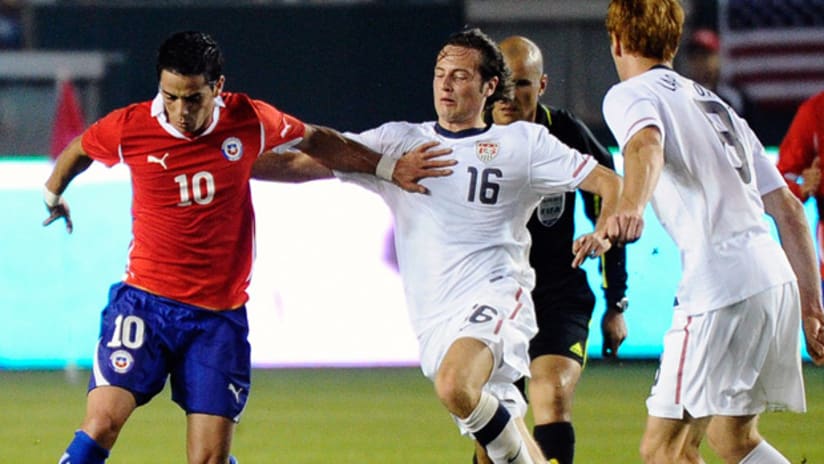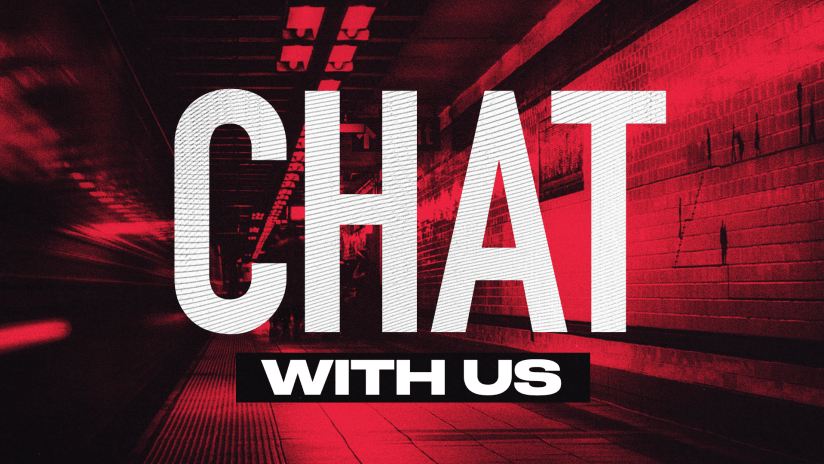There are several different ways to look at a performance like the United States’ 1-1 draw with Chile Saturday night.
First, there is the fact that you always play to win. That’s the point of sport, the point of competition, and by that measure, the US came up short. And it wasn’t just on the scoreboard, but in the body language of the players on the field for the first 45 minutes. There was a distinct lack of urgency from nearly the entire side.
In a way, that’s understandable. It was just a friendly against something less than the Chilean first team.
But while it’s partially comprehensible, it’s wholly disappointing. Whether it’s the Chilean reserves or a World Cup final against Brazil, you’d hope that just putting on the uniform would be incentive enough for a fully committed performance.
Another way of looking at it – and honestly, the more important way of looking at it at this point in the cycle – is to put individual performances in a box and analyze them a play, or a series of plays, at a time. Bob Bradley was likely much more interested in individuals than in the form of the entire team, since there’s a zero percent chance that the group we saw on Saturday will ever take the field in any meaningful competition.
And then there’s the eternal debate over personnel and tactics. Bradley’s first half 4-4-1-1 was pretty impotent, caused in large part by a few guys not being up to the task athletically. Notable for that were Jeff Larentowicz and Mix Diskerud.
Larentowicz simply doesn’t have the range to play in the Double-6 at the MLS level, let alone the international level. With the Colorado Rapids, Larentowicz is asked to be a sweeper rather than a two-way central midfielder, and the shiny new MLS Cup they have is a testament to how well that tactical approach works.
[inlinenode:327061]As a sweeper, Larentowicz sits in front of the central defense and organizes the game, making himself available as an outlet and allowing his central midfield partner (usually Pablo Mastroeni) to roam all over the field. The same tactics were used by FC Dallas, with Daniel Hernandez staying deep and McCarty, who has since moved on to D.C. United, being the roaming box-to-box midfielder.
Bradley’s decision to go with the Double-6 despite fielding two central midfielders better suited to different tactics is an insight into what the coach will field once he has more of his first choice central midfielders (Michael Bradley, Stuart Holden, Maurice Edu, Jermaine Jones, Ricardo Clark, José Torres) on hand, and it’s a fair bet we’ll see that formation next month in Egypt.
And to that I say, gird your loins. The fatal flaw of the Double-6 is the gap that tends to appear between the central midfield and central defense, and if you recall, that gap is from where England’s goal, both of Slovenia’s goals and Ghana’s first tally all came last summer.
On the flip side, the US’ best performance was the second half of that Slovenia, game with Edu playing as a sweeper and Michael Bradley further up – exactly how Colorado and Dallas play.
So, not to crush the elder Bradley, but the Double-6 with this personnel and this series of data points remains a strange and frustrating choice.
While Larentowicz’s range issue affected the ability of the team to coordinate the midfield and build from the back, Diskerud showed himself to be a bit out of his depth as a supporting striker/advanced central midfielder in the 4-4-1-1.
Nobody expected him to be Diego Forlán, or even Clint Dempsey, but Diskerud should have been able to offer more than he did. He was pretty consistently muscled off the ball – and this was not a particularly large or physical opponent – and his touch in traffic left much to be desired.
[inlinenode:327062]Chris Wondolowski, stranded on an island for most of his 60 minutes alone up top, was the primary casualty. Even so, Wondo had several very classy attacking plays on the night and will probably get another chance in the future, hopefully playing alongside another true striker.
The good news about Diskerud is that once he was moved to a flank midfield position midway through the second half, he became much more involved and productive. In fact, the whole team looked better for that stretch, which coincided neatly with the insertion of Sporting Kansas City’s Teal Bunbury and the New York Red Bulls’ Juan Agudelo, and a switch to a more traditional 4-4-2.
In terms of “individual performance,” Agudelo again stole the show, just as he did in November at South Africa. And you can see that Bunbury has a forward’s bloodlines as he plays a simple, hard-working, unselfish game reminiscent of Brian McBride. Barring injury, both will factor into Bradley’s thinking for every roster from here on out.
Defensively, the most telling part of the night is that Tim Ream played the whole 90. The first half was alongside Omar Gonzalez, playing a very deep line; the second alongside Marvell Wynne, playing what was an extraordinarily high line against a team as quick in attack as Chile. In that regard, it looked very much like a final exam to see if Ream has the flexibility to make the jump into the first team.
He probably does. Ream wasn’t outstanding – aside from Agudelo, no one was – but he was very good, which on a night like Saturday, is good enough. And Ream’s biggest strength, his ability to distribute, will only be enhanced by getting games alongside the regulars.
In a few weeks’ time, we’ll find out more.
Matthew Doyle can be reached for comment at matdoyle76@gmail.com and followed at twitter.com/mls_analyst.





